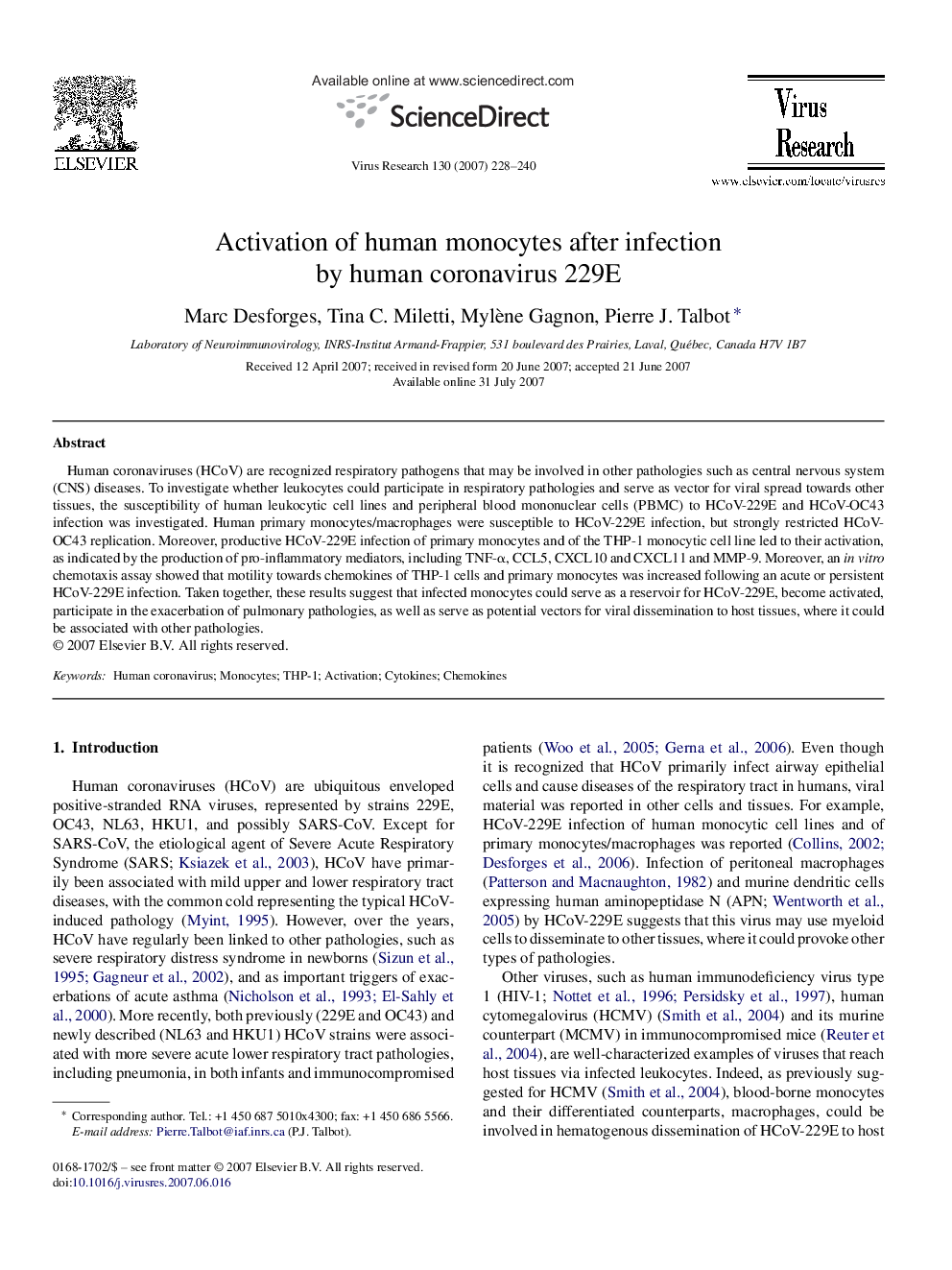| Article ID | Journal | Published Year | Pages | File Type |
|---|---|---|---|---|
| 3430668 | Virus Research | 2007 | 13 Pages |
Abstract
Human coronaviruses (HCoV) are recognized respiratory pathogens that may be involved in other pathologies such as central nervous system (CNS) diseases. To investigate whether leukocytes could participate in respiratory pathologies and serve as vector for viral spread towards other tissues, the susceptibility of human leukocytic cell lines and peripheral blood mononuclear cells (PBMC) to HCoV-229E and HCoV-OC43 infection was investigated. Human primary monocytes/macrophages were susceptible to HCoV-229E infection, but strongly restricted HCoV-OC43 replication. Moreover, productive HCoV-229E infection of primary monocytes and of the THP-1 monocytic cell line led to their activation, as indicated by the production of pro-inflammatory mediators, including TNF-α, CCL5, CXCL10 and CXCL11 and MMP-9. Moreover, an in vitro chemotaxis assay showed that motility towards chemokines of THP-1 cells and primary monocytes was increased following an acute or persistent HCoV-229E infection. Taken together, these results suggest that infected monocytes could serve as a reservoir for HCoV-229E, become activated, participate in the exacerbation of pulmonary pathologies, as well as serve as potential vectors for viral dissemination to host tissues, where it could be associated with other pathologies.
Related Topics
Life Sciences
Immunology and Microbiology
Virology
Authors
Marc Desforges, Tina C. Miletti, Mylène Gagnon, Pierre J. Talbot,
